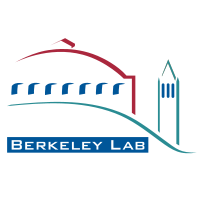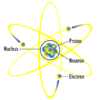Lawrence Berkeley National Laboratory

|
|
| Motto | View into the future |
|---|---|
| Established | August 26, 1931 |
| Research Type | Unclassified |
| Budget | $500 million |
| Director | Steven Chu |
| Staff | 4000 |
| Students | 800 |
| Location | Berkeley, California |
| Campus | 200 acres |
| Operating Agency | University of California |
| Nobel Laureates | 11 |
| Website | http://lbl.gov |
The Ernest Orlando Lawrence Berkeley National Laboratory (LBNL), is a U.S. Department of Energy (DOE) national laboratory conducting unclassified scientific research. It is located on the grounds of the University of California, Berkeley, in the Berkeley Hills above the central campus. It is managed and operated by the University of California. The Berkeley Lab holds the distinction of being the oldest of the U.S. Department of Energy's National Laboratories.
Contents |
History
The laboratory was founded as the Radiation Laboratory of the University of California, associated with the Physics Department, on August 26, 1931 by Ernest Orlando Lawrence as a site for centering physics research around his new instrument, the cyclotron (a type of particle accelerator for which he won the Nobel Prize in Physics in 1939). Throughout the 1930s, Lawrence pushed to create larger and larger machines for physics research, courting private philanthropists for funding, often with the promise of developing new forms of chemotherapy using radioisotopes produced by the cyclotrons. After the laboratory was scooped on a number of fundamental discoveries that they felt they ought to have made, the "cyclotroneers" began to collaborate more closely with the theoretical physicists in the Berkeley Department of Physics, led by Robert Oppenheimer. The lab moved to its site on the hill above campus in 1940 as its machines (specifically, the 184-inch cyclotron) became too big, and potentially too dangerous, to house on the university grounds.


Lawrence courted government as his sponsor in the early years of the Manhattan Project, the American effort to produce the first atomic bomb during World War II, and along with Applied Physics Laboratory at Johns Hopkins (which helped develop proximity fuse), along with the MIT Radiation Laboratory (which helped to develop radar) ushered in the era of "Big Science". LBNL helped contribute to what has been judged to be the three most valuable technology developments of the war (the atomic bomb, proximity fuse, and radar). Using the newly created 184-inch cyclotron as a mass spectrometer, Lawrence and his colleagues developed the principle behind the electromagnetic enrichment of uranium, which was put to use in the calutrons (named after the university) at the massive Y-12 facility in Oak Ridge, Tennessee and contributed some of the precious fissile material used for the "Little Boy" bomb which was dropped on Hiroshima, Japan.
After the war, Lawrence sought to maintain strong government and military ties at his lab, which became incorporated into the new system of Atomic Energy Commission (now Department of Energy) National Laboratories, but in the early 1950s set out that the lab's purpose would be primarily non-classified research, with classified weapon research taking place at Los Alamos National Laboratory (established during the war) and the new Lawrence Livermore National Laboratory, established by Lawrence and Edward Teller from what was originally a splinter from the original Radiation Laboratory. Some weapons-related and collaborative research continued at LBL until the 1970s, however.
After the death of Ernest Lawrence in 1959, the Radiation Laboratory was re-named the Ernest O. Lawrence Berkeley Laboratory, although many continued to call it the "Rad Lab". Gradually, another shortened form came into common usage, "LBL" (Lawrence Berkeley Laboratory). Today, the lab is also commonly referred to as the "Berkeley Lab". Its formal name was amended to the present Ernest O. Lawrence National Laboratory in the early 1980's recognizing the U.S. Department of Energy formally taking over the lab from the University of California but where the University managed it.
From the 1950s through the present, the laboratory has maintained its status as a major international center for physics research, and has also diversified its research program into almost every realm of scientific investigation. Along with its historical specialty of accelerator research and nuclear physics, the laboratory currently maintains divisions which investigate astrophysics, nuclear fusion, earth sciences, genomics, health physics, computer science, materials science, and environmental science, among other areas. The laboratory is also the site of the a number of National User Facilities, including the Advanced Light Source, National Center for Electron Microscopy, National Energy Research Scientific Computing Center, the Energy Sciences Network and the Molecular Foundry.
Operations and governance
The site consists of 76 buildings (owned by the U.S. Department of Energy) located on 200 acres (0.8 km²) owned by the University of California in the Berkeley Hills. Altogether, it has some 4,000 University of California employees, of whom about 800 are students. Each year, the Lab also hosts more than 3,000 participating guests. There are approximately two dozen DOE employees stationed at the laboratory to provide federal oversight of LBNL's work for the DOE.
The Laboratory's 17 scientific divisions are organized within the areas of Computing Sciences, Physical Sciences, Life and Environmental Sciences, and General Sciences. Many research projects are staffed and supported by multiple divisions, with computational and engineering integrated across the biosciences, general sciences and energy sciences.
The Laboratory Director is appointed by the Regents of the University of California and reports to the President of the University of California. The current director of the Laboratory is Steven Chu. Although LBL is governed by UC independently of the Berkeley campus, the two entities are closely interconnected: over 200 LBL researchers hold joint appointments as Berkeley faculty and over 500 Berkeley graduate students conduct research at LBL.
Lawrence Berkeley National Laboratory is a partner in the Joint Genome Institute located in Walnut Creek, California. The Joint Genome Institute was founded in 1997 to unite the expertise and resources in genome mapping, DNA sequencing, technology development, and information sciences pioneered at the three genome centers at UC's Lawrence Berkeley National Laboratory and Lawrence Livermore National Laboratory, and the Los Alamos National Laboratory.
The laboratory also manages the Department of Energy's high speed research network, ESnet.
Accolades
Notable scientific accomplishments at the Lab since World War II include the observation of the antiproton, the discovery of several transuranic elements, and the confirmation of the discovery of the accelerating universe.
Since its inception, eleven researchers at this Lab (Ernest Lawrence, Glenn T. Seaborg, Edwin M. McMillan, Owen Chamberlain, Emilio G. Segrè, Donald A. Glaser, Melvin Calvin, Luis W. Alvarez, Yuan T. Lee, Steven Chu, and George F. Smoot) have been awarded the Nobel Prize.
Elements discovered by laboratory physicists include astatine, neptunium, plutonium, curium, americium, berkelium*, californium*, einsteinium, fermium, mendelevium, nobelium, lawrencium*, dubnium, and seaborgium*. Those elements listed with asterisks (*) are named after the laboratory or some of its principal scientists. The element technetium was discovered after Ernest Lawrence gave Emilio Segrè a molybdenum strip from the LBL cyclotron.
Networking tools libpcap, tcpdump and traceroute were developed by the Network Engineering Group staff at the laboratory.
Scandal
The fabricated evidence used to claim the creation of ununoctium and ununhexium by Victor Ninov, a researcher employed at LBNL, led to the retraction of two articles and was one of the big scandals in physics in 2002.
External links
- LBNL (Official site)
- University of California Office of Laboratory Management
- The Rad Lab - Ernest Lawrence and the Cyclotron: American Institute of Physics web exhibit
- Lawrence and His Laboratory: A Historian's View of the Lawrence Years by J. L. Heilbron, Robert W. Seidel, and Bruce R. Wheaton.
- A Century of Physics at Berkeley: Seedtime for "Big Science", 1930-1950
- Lawrence Berkeley National Laboratory is at coordinates
| University of California, Berkeley | |
| Research |
Helen Wills Neuroscience Institute • Lawrence Berkeley National Laboratory • Renewable and Appropriate Energy Laboratory |
|
|||||||||||||
|
|||||||||||||
|
||||||||||||||||||||||||||
|
||||||||


